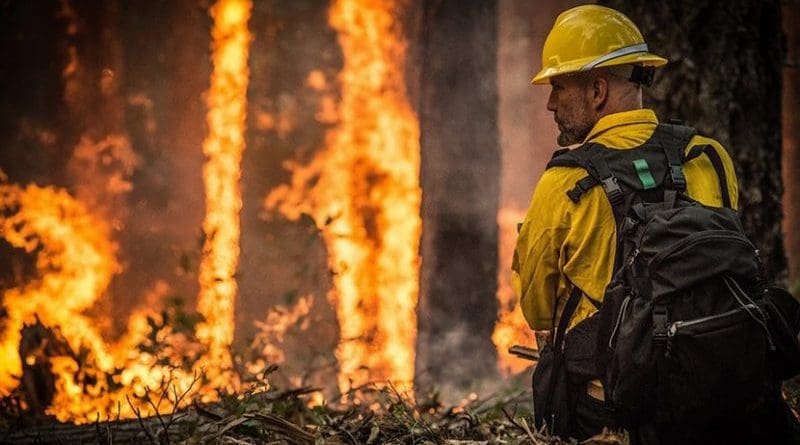The Growing Threat Of Wildfires In America
A growing number of American households are deemed high-risk for wildfire due to factors including climate change, drought and a growth of neighborhoods on the margins of cities and towns.
And this increased risk could present serious financial burdens to lower-income households unless systems are put in place to help underserved communities, according to Matthew Auer, dean of the University of Georgia’s School of Public and International Affairs and professor of public administration and policy.
In a paper published recently in Sustainability Science, Auer presents a case for a polycentric approach to wildfire management that could help mitigate some of the worst risks.
“We are learning about a growing number of people in the United States who have had their homeowner’s insurance cancelled because they live in wildfire prone areas, leaving homeowners to shoulder the costs for fireproofing,” Auer said. “There are many mitigation strategies that could lower risks, but they are often out of reach for low-income households.”
Auer suggests that multi-scale networks involving the cooperation of individual homeowners, neighborhood groups, local, state, and federal government agencies, and non-governmental organizations are the only viable solution to the problem.
These groups may create Community Wildfire Protection Plans, or CWPPs, which can provide educational resources, assist with fire-resistant home construction and landscaping, or even host “clean up days” to remove excess vegetation around homes, Auer said. They may also have access to limited funding to support local efforts.
“We actually have the tools to help mitigate risks from destructive wildfires, but we have to make sure that they are accessible to whole communities,” he said.
Auer highlights the Boulder County, Colorado CWPP as a notable example of the power of this kind of community organization. Federal, state, county and local entities developed the plan with help from technical experts and a citizen advisory team.
The partnership addresses the unique needs of individual communities within the broader CWPP, granting access to information and funding to help those communities mitigate fire risks. And Auer argues that these agencies must carefully consider fairness and efficiency in how the costs of wildfire safety are distributed.
While groups like this are more frequently developed in areas where wildfires are commonplace, fewer than 10 percent of communities at risk of wildfire have developed CWPPs, according to the US Fire Administration.
“A program that works in one area may not work elsewhere. CWPPs can be adapted to very different kinds of local conditions, but the essential first step is getting everyone to agree that a plan is needed in the first place,” Auer said.
Preparing for and preventing major wildfires will not go away on its own, Auer observes.
Since 1960, the year 2020 ranked second in terms of total acres burned per annum by wildfire, according to the Congressional Research Service, and the three years when wildfires burned at least 10 million or more acres per annum have all occurred since 2014.
The development of homes in areas where structures intermix with wildland fuel like trees and other vegetation has also increased significantly in recent years, particularly during the COVID-19 pandemic as more people worked remotely.
“All of the probabilistic forecasts say that this is the future,” he said. “We have to get serious about wildfire risks in rural areas that don’t get much attention and recognize the large numbers of at-risk households that can’t fend for themselves.”

